- Home
- Tom Clancy
Fighter Wing: A Guided Tour of an Air Force Combat Wing Page 22
Fighter Wing: A Guided Tour of an Air Force Combat Wing Read online
Page 22
Penetration Bombs
A constant of warfare in the 20th century is that concrete has been one of the great equalizers among combatants. Cheap, available, and relatively easy to work with, it can be fashioned into a variety of structures which can protect even delicate, high-value items like aircraft and dictators from the ravages of the elements and the forces of modern warfare.
Ever since the end of the Vietnam War, the USAF wanted a bomb that could penetrate bunkers, runways, and other reinforced concrete structures—a bomb that didn’t weigh 3,000 to 4,000 lb./1,363.6 to 1,818 kg., and wasn’t nuclear. In 1984, the Air Force Armament Division initiated Project Have Void and awarded a contract to Lockheed Missile and Space’s Austin (Texas) Division to develop the new bomb, to be known as the BLU-109/B. Forged out of hardened 4340 steel, the BLU-109/B is essentially a large “masonry nail,” shaped to plow through concrete, earth, and armor plate, and then explode on the other side of the protection. Weighing in at 1,925.5lb./ 875.3 kg., it has a specially shaped nose that is designed to help it “dig in” to flat concrete at high grazing angles. While the BLU-109/B can be dropped as a “dumb” bomb, when married to a Paveway III-series or GBU-15 guidance kit, it becomes a killing machine of incredible power and accuracy.
A cutaway drawing of the BLU-109/B Penetrating Bomb warhead. Jack Ryan Enterprises, Ltd., by Laura Alpher
With its capability of destroying, or “holding at risk,” something like 99% of all the hardened targets in the world, the BLU-109/B has transformed the nature of air warfare. Saddam Hussein found this out the hard way back in 1991, when these bombs blew up virtually every hardened target in his country. When the Iraqi Air Force tried to take refuge in Yugoslav- and European-built hardened aircraft shelters that were thought proof against even near-misses by tactical nuclear weapons, they were opened up like tin cans by the penetrating power of the BLU-109/B. After a couple of days of such pounding, the remnants of the Iraqi Air Force ran for Iran.
Cluster Bombs
Early in the Vietnam War, American airmen began to encounter more and more targets that were spread out—so-called “area” targets made up of “soft,” unarmored vehicles, supply dumps, and lightly built structures. What was needed was a weapon which would spread its effects over a known area, with a well-understood set of weapons effects. Rather than try to smear flaming napalm onto all of these things, something more modern was needed. That something was the cluster munition. Cluster bombs were not new. The idea dates back to World War II, when both fragmentation and incendiary cluster bombs were used for many purposes, but suffered from restrictive delivery profiles and the lack of predictable dispersal patterns for the small bombs (called “bomblets” or submunitions) carried in the cluster. To overcome these limitations, the U.S. Navy developed a new concept—the munitions dispenser.
The dispenser would be a “truck” for the load of submunitions, which would be dropped like a normal GP bomb onto the target area. At a preplanned altitude, the fuze (proximity or time delay from aircraft launch) would activate, causing the outer skin panels of the dispenser to break loose. Then another charge (usually compressed air or a small pyrotechnic charge) blasted the load of bomblets loose into a preplanned pattern, which would then fall onto the target.
The interior of an Iraqi hardened aircraft shelter showing the effects of a laser-guided BLU-109/B penetrating warhead following Operation Desert Storm. The pile in the middle of the floor is the concrete and filler from the ceiling, and what appears to be spaghetti is the steel reinforcement bars blown in by the force of the warhead. Official U.S. Air Force Photo
The Navy’s first effort, which began in 1963, centered around a dispenser called the Mk 7. When activated by an Mk 339 time delay fuze, the dispersion charge has the effect of scattering the submunitions in an elongated, doughnut-shaped pattern whose size is controlled by the release height of the bomblets. Each submunition has its own fuze, which detonates upon contact with a target or the ground. When the whole package was put together, it was known as the Mk 20 Rockeye II Mod. 2. It carried a load of 247 M118 anti-tank munitions that looked for all the world like sadistic hypodermic syringes, weighed in at some 490 lb./222.7 kg., and was an instant success with American aircrews when it reached Vietnam in 1967. Adopted by both the Navy and Air Force, it was particularly welcomed by aircrews tasked with attacking SAM sites and AAA gun emplacements, which were particularly vulnerable to the deadly rain of cluster munitions. This classic piece of aircraft ordnance has been so effective that some 27,987 Rockeye IIs were dropped on targets during Desert Storm, more than any other cluster munition used. At only $3,449 a copy (in 1991 dollars), it is quite a bargain by current standards.
With the early success of the Rockeye, the Air Force quickly jumped on the bandwagon and started development of its own cluster bomb dispenser, the Suspension Underwing Unit (SUU-30H/B). A total of 17,831 SUU-30-series weapons were delivered by U.S. aircraft during Desert Storm. This dispenser became the basis for a whole family of USAF CBUs. Some of the versions currently in use include:
As you can see, the variety of submunitions and weapons effects is numbing. Again, fuzing is as critical to successful employment of the SUU-30 family as it is for the 80-series GP bombs. If the dispenser opens too soon, then the density of submunitions will not be high enough to ensure destruction of the target. Similarly, if the canister opens too late, then the bomblets will not spread out enough to cover the whole target. As might be imagined, it is a challenge for planners, ordnance technicians, and loaders to figure out the proper dispenser/submunition/fuze combination.
As good as the early CBUs were, they still imposed a number of restrictions upon fliers trying to deliver them. By the early 1980s the Air Force was beginning to realize that the early CBUs were shackled by a number of limitations in high-threat target areas. Most especially, the aircraft delivering them had to actually overfly the target in “laydown” delivery profiles, exposing them to ground fire. Thus, a new series of submunitions was developed by the Air Force, with a larger dispenser that would get enough of them onto a target array to be useful. And so was born the SUU-64/65 Tactical Munitions Dispenser (TMD).
The TMD is a 1,000 lb./454.5 kg.-class weapon, with three versions currently in service with the USAF. All three share the basic TMD dispenser components, with only the submunition load and other minor details differentiating them. Starting at the front is the optional FZU-39/B proximity fuze, which is designed to tell the TMD its exact altitude at all times. There is also a time delay fuze, which can be used by itself, or in conjunction with the FZU-39/B. Just aft of the nose/fuze section is the cargo section where the submunitions are packed. This is a tubular body section, with equipment designed to cut the body into thirds when the submunitions are ready to be deployed. This is topped by a structure called a strongback, where the mounting lugs are attached. At the rear is a tail assembly, with spring-loaded guidance fins designed to stabilize the entire TMD assembly.
The three different variants of the TMD are shown in the table below:
On the CBU-87/B, the SUU-65 dispenser is loaded with 214 BLU-97/B Combined Effects Munitions (CEMs), and is planned to replace almost every type of CBU. About the size and shape of a beer can, each CEM is equipped with its own ballute, making each a tiny high-drag bomb. It is designed to have excellent weapons effects against armored vehicles and exposed infantry, as well as superb incendiary effects against targets like fuel and ammunition dumps. The BLU-97/B accomplishes this through the use of a unique triple-function pyrotechnic package. Its anti-armor capability comes from a shaped charge capable of penetrating the top armor of virtually any tank or armored vehicle in the world. Surrounding the shaped charge is a serrated steel case, which fragments into hundreds of 30-grain size (about 1/4 in./6mm.) fragments. Finally, at the rear of the CEM is a ring of zirconium. When fragmented and heated to incandescence by the explosive of the shaped charge, it ignites violently as soon as it hits the oxygen of air.
Armed w
ith the finest general purpose submunition in the world, the CBU-87/B functions by delivering its load more accurately than any other dispenser in the inventory. Also, the CBU-87/B can be dropped from as low as 400 feet/121.9 meters, and as high as 40,000 feet/12,192 meters. This means that in addition to making tactical aircraft more survivable in high-threat environments, the CBU-97/B can now be used from bombers like the B-52, B-1B, and B-2. Some 10,035 CBU-87/Bs were dropped during Desert Storm, and in time, it will become the primary CBU in the USAF inventory.
The second TMD derivative to be fielded is the CBU-89/B, which is designed to replace the earlier CBU-78/B in the mine deployment role. Composed of an SUU-64/B TMD, it is loaded with seventy-two BLU-91/B anti-personnel mines, and twenty-four BLU-92/B Gator anti-tank mines. The BLU-92/B Gator is an anti-vehicle mine with a highly sophisticated fuzing system, including the deployment of wire “feelers” to detonate the warhead. Once activated, the Gator fires a self-forging projectile or “spoon” into the belly of the target vehicle at a speed of over Mach 3, destroying the target. There were 1,105 CBU-89/Bs used during Desert Storm with great success.
A cutaway drawing of the CBU-87/B version of the Tactical Munitions Dispenser (TMD).
Jack Ryan Enterprises, Ltd., by Laura Alpher
The newest TMD variant to make it into the field is the CBU-97B, which is equipped with the new BLU-108/B anti-armor submunition. First fielded in 1992, each CBU-97/B is composed of an SUU-64/B TMD, loaded with ten of the BLU-108/Bs. Known as a “sensor fuzed weapon,” the BLU-108/B looks like an oversized coffee can when it is ejected from the TMD. Once clear of the TMD, each BLU-108/B ejects four small devices called “skeets.” The skeets, which look a lot like jumbo-sized hockey pucks, are flung spinning from the BLU-108/B in four different directions to maximize their coverage. Once armed, each skeet scans the ground with a sensitive infrared seeker, tuned to look for the heat signature of an internal combustion engine. Should the skeet sensor detect the heat of a vehicle below, it fires a self-forging projectile or “spoon” down into the engine compartment of the vehicle at a speed of roughly Mach 5! The projectile has so much energy, that it just punches through the vehicle, even if it is a tank, usually destroying whatever it hits.
With the coming of the SUU-64/65 TMD, most of the tactical limitations of previous types of CBUs have been eliminated. There is also a program, called the Wind Corrected Munition (WCM), which is designed to add a small, cheap, strapdown INS guidance system to the back of the TMD, along with guidance fins. The idea is that the inertial system would detect any course deviations resulting from crosswinds and correct for the wind drift. Given the hyper-accurate weapons delivery systems on various U.S. aircraft, particularly bombers like the B-1B and B-2, this would make truly accurate high-altitude CBU drops a reality.
Electro-Optical Bombs: The GBU-15/AGM-130 Series
Airpower enthusiasts have long dreamed of a munition which would drop a bridge or destroy a building with only one round. This has been the promise of airpower for over seventy-five years, and it has taken a long time to even get close to that. Like the AAM, the first real successes in the area of precision-guided munitions came from Nazi Germany in World War II. In 1943, the Luftwaffe deployed a pair of guided bombs, the FRITZ-X and the HS-293, for use as standoff precision strike weapons. Though they were quite primitive, they terrorized Allied shipping, and even sank an Italian battleship, the Roma, as it was on its way to surrender to Allied forces. After World War II, such efforts took a backseat to nuclear weapons development. Then, with the coming of the Vietnam War, the Air Force was forced to realize that there were a number of international situations where nukes were just not appropriate. Thus, the USAF went into Vietnam completely unequipped for the war they would spend the next decade trying to win.
Immediately, the air units involved in the war began to find that they had been the victims of an unanticipated paradigm shift. Where in the past the flattening of a town with a carpet of GP bombs was a politically acceptable option, in Vietnam, it was a war crime. The politics of appearance were taking over in the 1960s, with the result that politicians now wanted the “surgical” air strikes that airpower zealots had promised for decades. Unfortunately, such promises by the visionaries who had created airpower as a weapon had never anticipated flying into an integrated air defense system (IADS) of fighters, SAMs, and AAA guns all tied together with a computerized sensor network of radars and observation posts. No one had anticipated that crews of tactical aircraft would be trying to drop their loads of munitions while violently “jinking” and fighting for their lives against coordinated multiple threats such as American pilots and crews saw in the skies over North Vietnam. Worse than that was where some of those bombs fell after they were dropped. Collateral damage is a serious concern in any war, but even more so when the enemy is showing American newsmen the destruction wrought by errant bombs and contrasting it with the stories of “precision strikes” coming out of official channels in Washington, D.C.
In an effort to overcome the political problems of collateral damage, as well as the tactical problems of fighting in an IADS environment to precisely deliver ordnance onto a target, the USN and USAF initiated a series of programs known as Precision Avionics Vectoring Equipment (PAVE), designed to provide aviators with weapons that could hit high-value targets with some sort of standoff and precision. One promising technology was television electro-optics (TV E/O). This means that the guidance electronics package looks at the TV camera picture and locks onto the contrast “edge” or line between a dark and light zone on the picture. Integrated circuits and microprocessors were years away, and the early history of what we now call electro-optically (E/O) guided bombs was riddled with problems as a result.
The Air Force E/O guided bomb program, known as the Glide Bomb Unit (GBU)-8 (also known by its program nickname of HOBOS, which stands for Homing Bomb System), was designed to be what is called a “modular” bomb. This means that the guidance kit (the seeker and guidance fin sections) would be literally bolted onto a standard -80-series bomb, which would act as the warhead. This meant that the warhead could be tailored for any kind of target that was required, be it heavy demolition (where a 2,000 lb./909.1 kg. Mk 84 would be appropriate), or area suppression (where a cluster bomb dispenser would be best). The GBU-8 was designed and built by Rockwell International in Columbus. Unfortunately, the USAF HOBOS had a poor combat career in Vietnam. There were a lot of single-point failures in various subsystems that made proper development of E/O bomb delivery tactics nearly impossible. But the worst of the problems revolved around the GBU-8 seeker itself. Because they had to actually see the target, the E/O bombs of the period could not be used in times of darkness or reduced visibility. In anything but “perfect” conditions, the WSOs had to take manual control of the HOBOS through the data links and try to fly the bombs onto the targets. Frequently, they did not have time to make the necessary corrections before bomb impact.
By 1972, the shortcomings of the first-generation HOBOS were well understood, and the Air Force initiated a program to develop an improved family of E/O guided bombs. Now known officially as the Modular Glide Bomb System, the new program was designed to overcome the problems that had plagued the early HOBOS. Following a design competition under the Pave Strike program, the USAF selected Rockwell International as the winner to build what would now be called the GBU-15. The major improvements that the GBU-15 was designed to have over the earlier GBU-8 included:• A longer standoff range to allow the launch aircraft to stay out of the range of SAMs and AAA guns.
• More maneuverability and cross-range performance, to provide greater tactical flexibility, and to improve endgame accuracy during approach to the target.
• An improved data link system, to allow greater control of the weapon during the terminal phase, the approach to the target.
• A greatly improved seeker system, with greater resolution and target discrimination capabilities.
• Options for improved s
eekers, including an infrared imaging (IIR) variant.
With these ideas in mind, the Rockwell International engineers got to work. Though they started fresh with the new design, Rockwell kept most of the good things that the GBU-8 had offered, starting with a standard Mk 84 2,000 lb./909.1 kg. bomb body as the warhead. This time, though, with the emerging miracle of integrated circuitry and microprocessors, Rockwell was able to do a much better job. Rockwell also added Hughes Missile Systems to the GBU-15 team; they produced the TV seeker from technology based on their highly successful AGM-65 Maverick air-to-ground missile. As an added bonus, a version of the seeker based on technology from the Imaging Infrared (IIR) version of the Maverick was designed and eventually fielded.
The basic GBU-15 is composed of a guidance/fin section, a bomb warhead, and a cruciform wing group (with steering fins) at the rear of the weapon. The following table shows the details of the various GBU-15 variants:
The initial E/O version was known as the GBU-15(V)-1. Originally operational in 1977 with the Israeli Air Force (the USAF spent five more years testing and developing it), it is currently cleared for use on the F-111F and the F-15E Strike Eagle. It was followed by the IIR version, designated GBU-15(V)- 2, and is favored by crews and planners. Some seventy of the GBU-15(V)-2s were expended in the Persian Gulf during Desert Storm in 1991. Like the earlier HOBOS, it is equipped with a two-way data link, with the instructions and seeker video data being fed through a pod, designated AN/AXQ-14. This allows the WSO of the launching aircraft, or another controlling aircraft, to actually fly the bomb onto a target with truly stunning precision. In addition, the data link system allows the seeker video to be recorded; this assists in bomb damage assessment (BDA), as well as providing CNN with exciting videos!

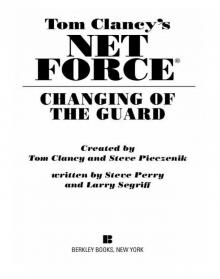 Changing of the Guard
Changing of the Guard Clear and Present Danger
Clear and Present Danger Hounds of Rome
Hounds of Rome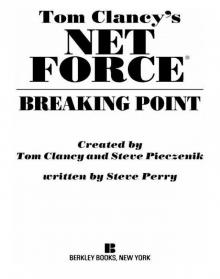 Breaking Point
Breaking Point Tom Clancy's Jack Ryan Books 7-12
Tom Clancy's Jack Ryan Books 7-12 Full Force and Effect
Full Force and Effect The Archimedes Effect
The Archimedes Effect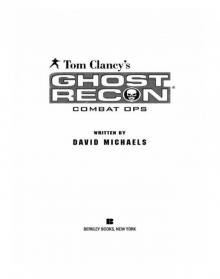 Combat Ops
Combat Ops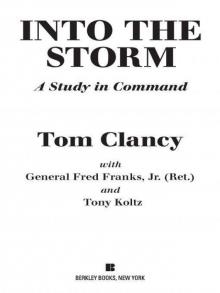 Into the Storm: On the Ground in Iraq
Into the Storm: On the Ground in Iraq Under Fire
Under Fire Point of Impact
Point of Impact Red Rabbit
Red Rabbit Rainbow Six
Rainbow Six The Hunt for Red October
The Hunt for Red October The Teeth of the Tiger
The Teeth of the Tiger Conviction (2009)
Conviction (2009)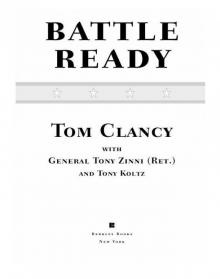 Battle Ready
Battle Ready Patriot Games
Patriot Games The Sum of All Fears
The Sum of All Fears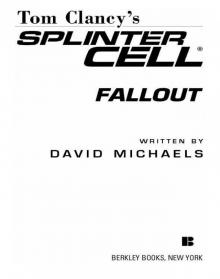 Fallout (2007)
Fallout (2007) Red Storm Rising
Red Storm Rising The Cardinal of the Kremlin
The Cardinal of the Kremlin Executive Orders
Executive Orders Lincoln, the unknown
Lincoln, the unknown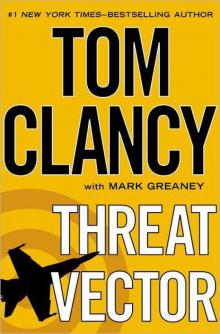 Threat Vector
Threat Vector The Hunted
The Hunted Shadow Warriors: Inside the Special Forces
Shadow Warriors: Inside the Special Forces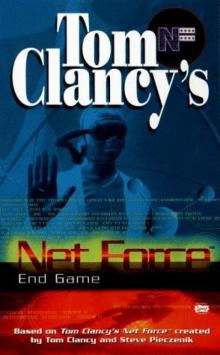 End Game
End Game Special Forces: A Guided Tour of U.S. Army Special Forces
Special Forces: A Guided Tour of U.S. Army Special Forces Locked On
Locked On Line of Sight
Line of Sight Tom Clancy Enemy Contact - Mike Maden
Tom Clancy Enemy Contact - Mike Maden Fighter Wing: A Guided Tour of an Air Force Combat Wing
Fighter Wing: A Guided Tour of an Air Force Combat Wing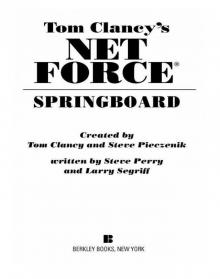 Springboard
Springboard Line of Sight - Mike Maden
Line of Sight - Mike Maden EndWar
EndWar Dead or Alive
Dead or Alive Tom Clancy Support and Defend
Tom Clancy Support and Defend Checkmate
Checkmate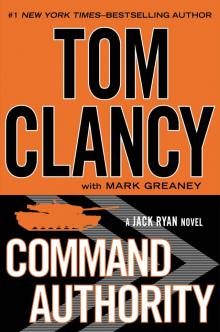 Command Authority
Command Authority Carrier: A Guided Tour of an Aircraft Carrier
Carrier: A Guided Tour of an Aircraft Carrier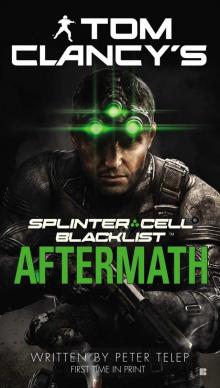 Blacklist Aftermath
Blacklist Aftermath Marine: A Guided Tour of a Marine Expeditionary Unit
Marine: A Guided Tour of a Marine Expeditionary Unit Commander-In-Chief
Commander-In-Chief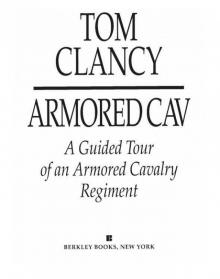 Armored Cav: A Guided Tour of an Armored Cavalry Regiment
Armored Cav: A Guided Tour of an Armored Cavalry Regiment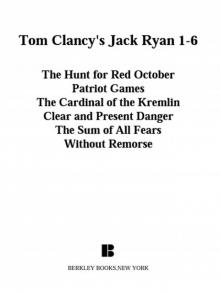 Tom Clancy's Jack Ryan Books 1-6
Tom Clancy's Jack Ryan Books 1-6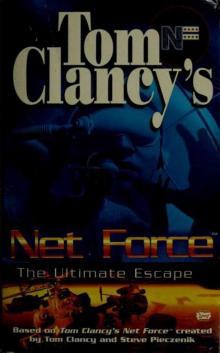 The Ultimate Escape
The Ultimate Escape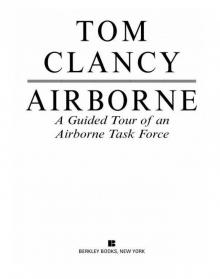 Airborne: A Guided Tour of an Airborne Task Force
Airborne: A Guided Tour of an Airborne Task Force Debt of Honor
Debt of Honor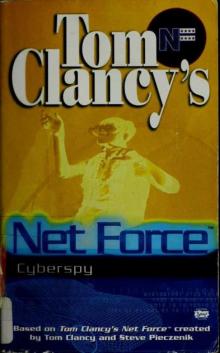 Cyberspy
Cyberspy Point of Contact
Point of Contact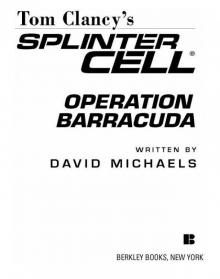 Operation Barracuda (2005)
Operation Barracuda (2005)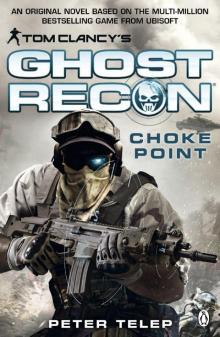 Choke Point
Choke Point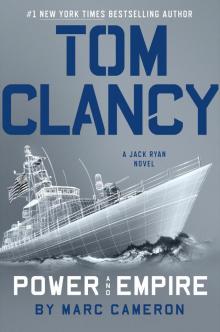 Power and Empire
Power and Empire Every Man a Tiger: The Gulf War Air Campaign
Every Man a Tiger: The Gulf War Air Campaign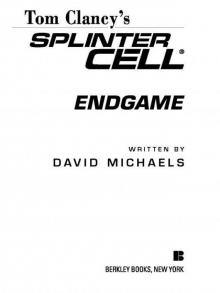 Endgame (1998)
Endgame (1998)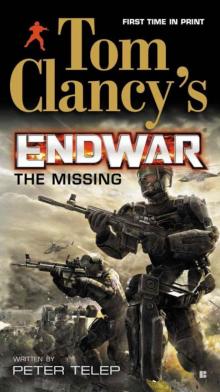 EndWar: The Missing
EndWar: The Missing Splinter Cell (2004)
Splinter Cell (2004) The Great Race
The Great Race True Faith and Allegiance
True Faith and Allegiance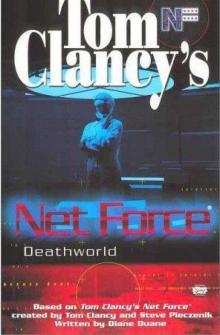 Deathworld
Deathworld Ghost Recon (2008)
Ghost Recon (2008)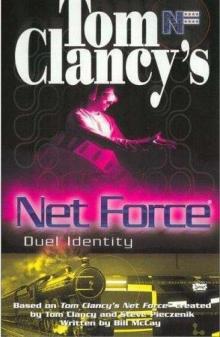 Duel Identity
Duel Identity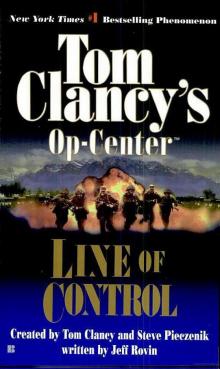 Line of Control o-8
Line of Control o-8 The Hunt for Red October jr-3
The Hunt for Red October jr-3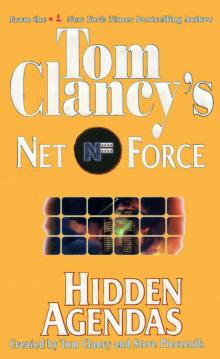 Hidden Agendas nf-2
Hidden Agendas nf-2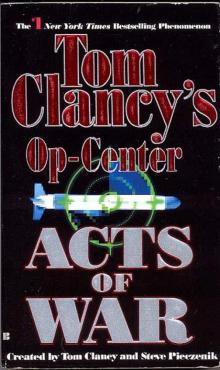 Acts of War oc-4
Acts of War oc-4 Ruthless.Com pp-2
Ruthless.Com pp-2 Night Moves
Night Moves The Hounds of Rome - Mystery of a Fugitive Priest
The Hounds of Rome - Mystery of a Fugitive Priest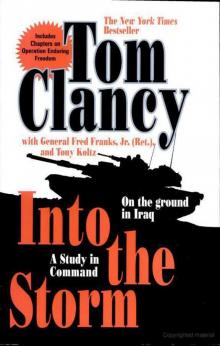 Into the Storm: On the Ground in Iraq sic-1
Into the Storm: On the Ground in Iraq sic-1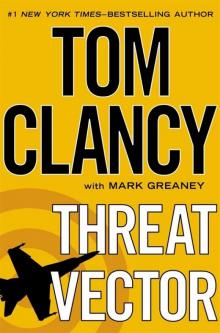 Threat Vector jrj-4
Threat Vector jrj-4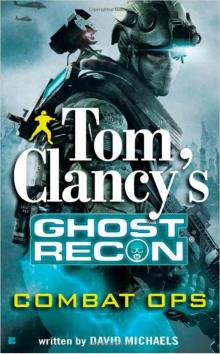 Combat Ops gr-2
Combat Ops gr-2 Virtual Vandals nfe-1
Virtual Vandals nfe-1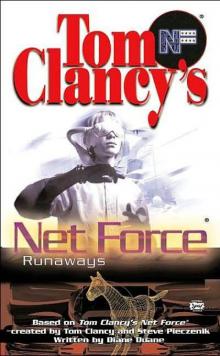 Runaways nfe-16
Runaways nfe-16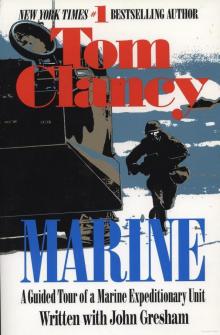 Marine: A Guided Tour of a Marine Expeditionary Unit tcml-4
Marine: A Guided Tour of a Marine Expeditionary Unit tcml-4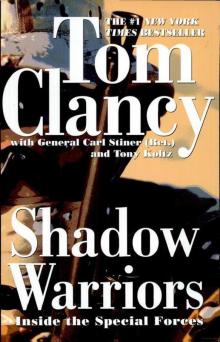 Shadow Warriors: Inside the Special Forces sic-3
Shadow Warriors: Inside the Special Forces sic-3 Jack Ryan Books 1-6
Jack Ryan Books 1-6 Cold Case nfe-15
Cold Case nfe-15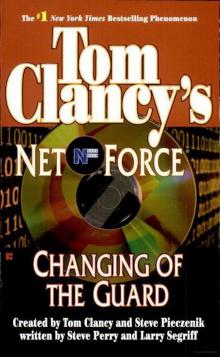 Changing of the Guard nf-8
Changing of the Guard nf-8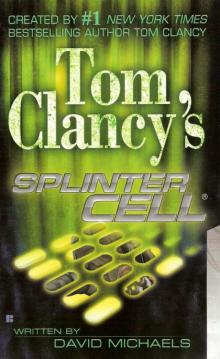 Splinter Cell sc-1
Splinter Cell sc-1 Battle Ready sic-4
Battle Ready sic-4 The Bear and the Dragon jrao-11
The Bear and the Dragon jrao-11 Fighter Wing: A Guided Tour of an Air Force Combat Wing tcml-3
Fighter Wing: A Guided Tour of an Air Force Combat Wing tcml-3 Patriot Games jr-1
Patriot Games jr-1 Jack Ryan Books 7-12
Jack Ryan Books 7-12 Mission of Honor o-9
Mission of Honor o-9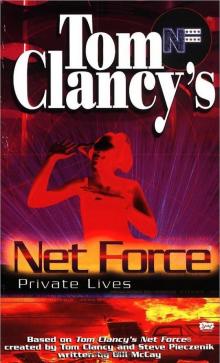 Private Lives nfe-9
Private Lives nfe-9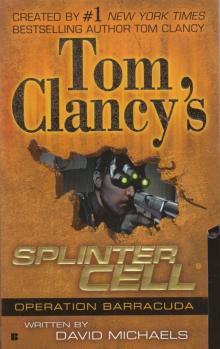 Operation Barracuda sc-2
Operation Barracuda sc-2 Cold War pp-5
Cold War pp-5 Point of Impact nf-5
Point of Impact nf-5 Red Rabbit jr-9
Red Rabbit jr-9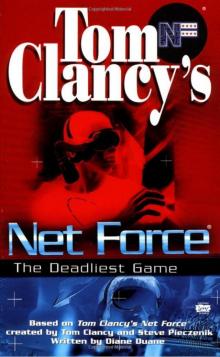 The Deadliest Game nfe-2
The Deadliest Game nfe-2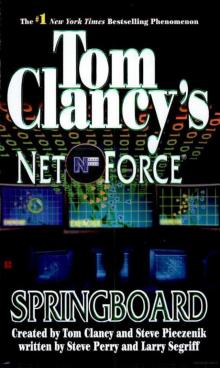 Springboard nf-9
Springboard nf-9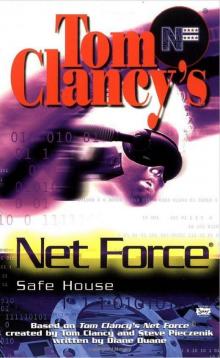 Safe House nfe-10
Safe House nfe-10 EndWar e-1
EndWar e-1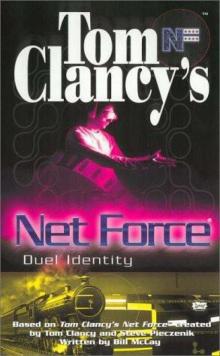 Duel Identity nfe-12
Duel Identity nfe-12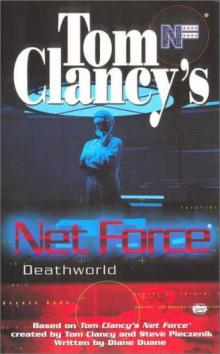 Deathworld nfe-13
Deathworld nfe-13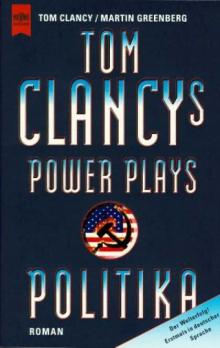 Politika pp-1
Politika pp-1 Rainbow Six jr-9
Rainbow Six jr-9 Tom Clancy's Power Plays 1 - 4
Tom Clancy's Power Plays 1 - 4 Endgame sc-6
Endgame sc-6 Executive Orders jr-7
Executive Orders jr-7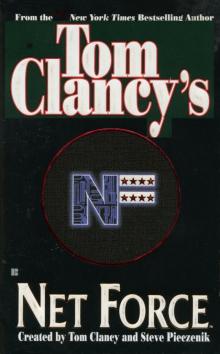 Net Force nf-1
Net Force nf-1 Call to Treason o-11
Call to Treason o-11 Locked On jrj-3
Locked On jrj-3 Against All Enemies
Against All Enemies The Sum of All Fears jr-7
The Sum of All Fears jr-7 Sea of Fire o-10
Sea of Fire o-10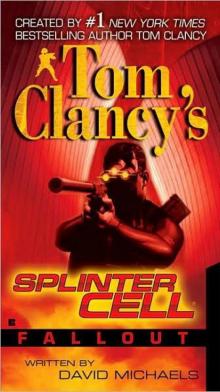 Fallout sc-4
Fallout sc-4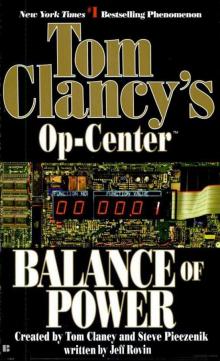 Balance of Power o-5
Balance of Power o-5 Shadow Watch pp-3
Shadow Watch pp-3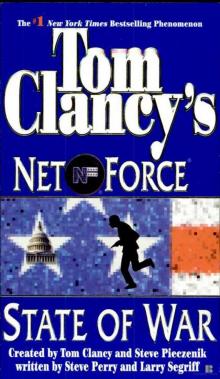 State of War nf-7
State of War nf-7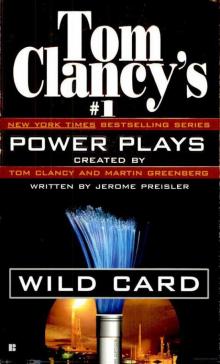 Wild Card pp-8
Wild Card pp-8 Games of State o-3
Games of State o-3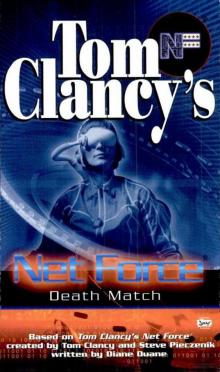 Death Match nfe-18
Death Match nfe-18 Against All Enemies mm-1
Against All Enemies mm-1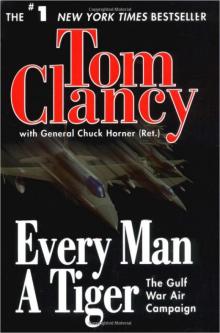 Every Man a Tiger: The Gulf War Air Campaign sic-2
Every Man a Tiger: The Gulf War Air Campaign sic-2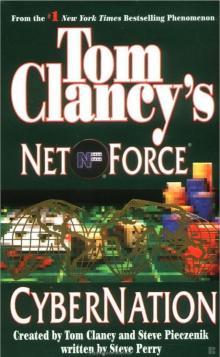 Cybernation nf-6
Cybernation nf-6 Support and Defend
Support and Defend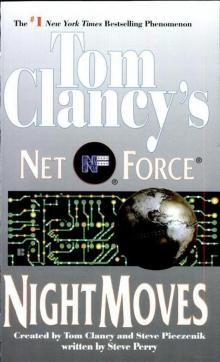 Night Moves nf-3
Night Moves nf-3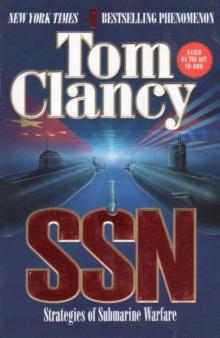 SSN
SSN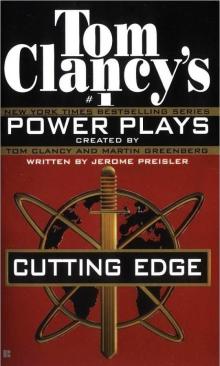 Cutting Edge pp-6
Cutting Edge pp-6 The Cardinal of the Kremlin jrao-5
The Cardinal of the Kremlin jrao-5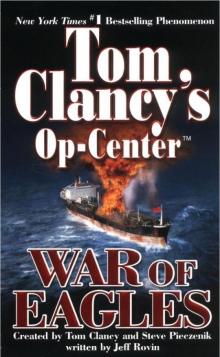 War of Eagles o-12
War of Eagles o-12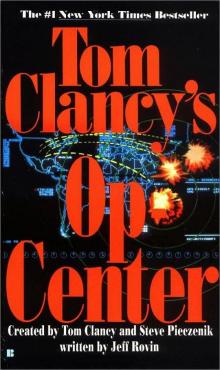 Op-Center o-1
Op-Center o-1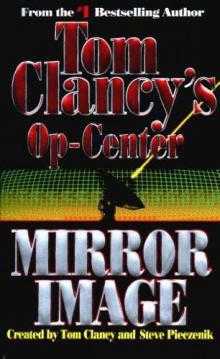 Mirror Image o-2
Mirror Image o-2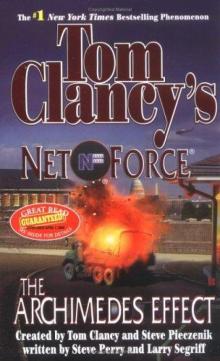 The Archimedes Effect nf-10
The Archimedes Effect nf-10 Teeth of the Tiger jrj-1
Teeth of the Tiger jrj-1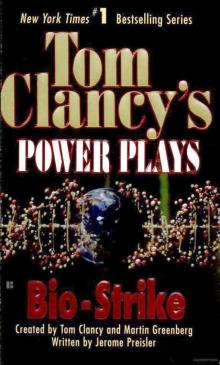 Bio-Strike pp-4
Bio-Strike pp-4 State of Siege o-6
State of Siege o-6 Debt of Honor jr-6
Debt of Honor jr-6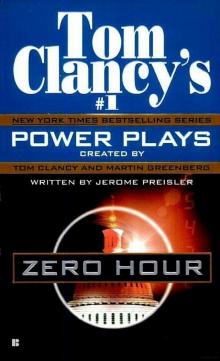 Zero Hour pp-7
Zero Hour pp-7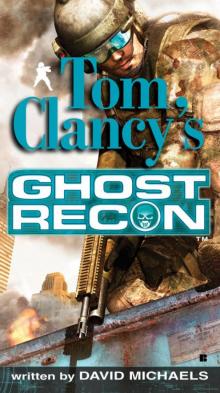 Ghost Recon gr-1
Ghost Recon gr-1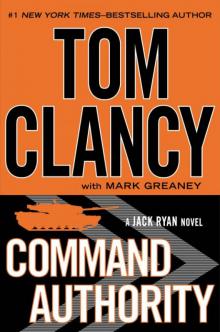 Command Authority jr-10
Command Authority jr-10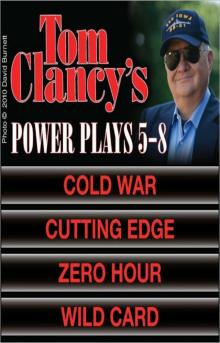 Tom Clancy's Power Plays 5 - 8
Tom Clancy's Power Plays 5 - 8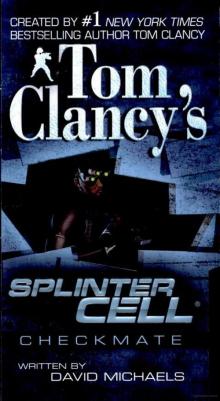 Checkmate sc-3
Checkmate sc-3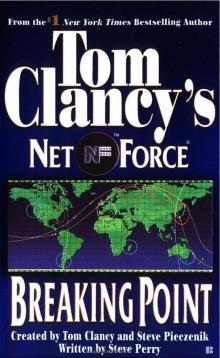 Breaking Point nf-4
Breaking Point nf-4 Gameprey nfe-11
Gameprey nfe-11 The Hunted e-2
The Hunted e-2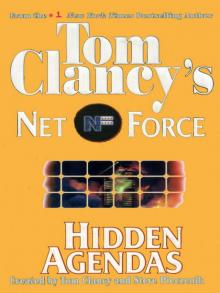 Hidden Agendas
Hidden Agendas Divide and Conquer o-7
Divide and Conquer o-7